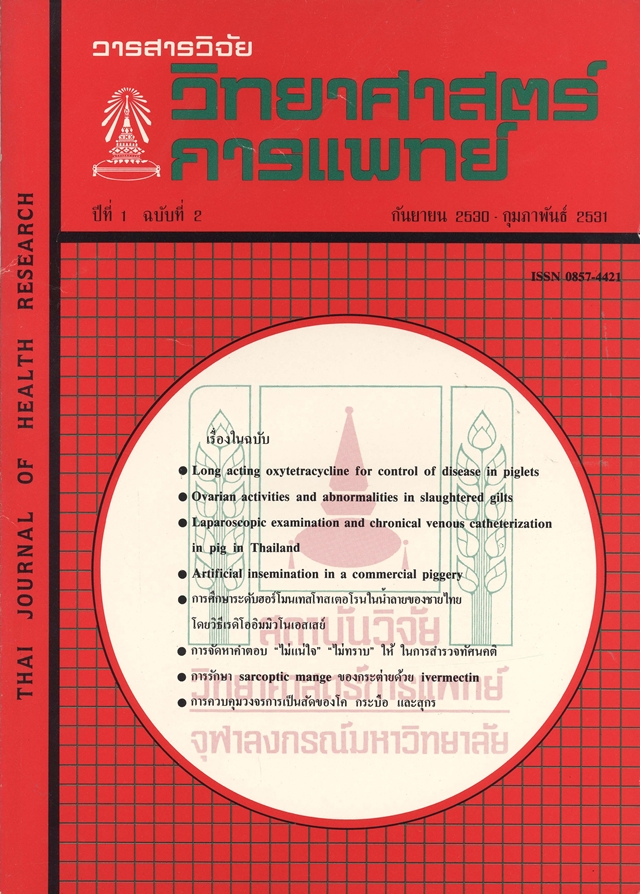Ovarian activities and abnormalities in slaughtered gilts
Keywords:
-Abstract
One thousand nonparous, crossbred gilts were used in this study. They were slaughtered and all reproductive organs were collected and examined. Abnormalities of the reproductive tracts, ovaries occurrence and number of corpora lutea and follicles of diameter more than 5 mm in ovaries were recorded. They were cIass13ed to two categories, normal and abnormal. The normal group was divided into 2 groups, prepubertal and sexually mature gilts according to the appearance of corpora lutea.
There were 836 and I64 gilts in the normal and abnormal groups respectively. The abnormal group consisted of true hermaphrodite (0.2%), uterine imperfecta (0.3%), oviduct diverticularization (3.9%), hydrosalphinx (0.1%), follicular cysts (5.6%) and cystic corpora lutea (7.0%). Among the normal gilts, there were 337 prepubertal gilts (40.3%) and 499 sexually mature gilts (59.7%). The physiological data revealed the left ovaries were more active than the right for all reproductive stages and in the aspect of weight, size of the ovaries and number of follicles. The weight of the uterus in the sexually mature gilts was significantly heavier than the prepubertal group.







